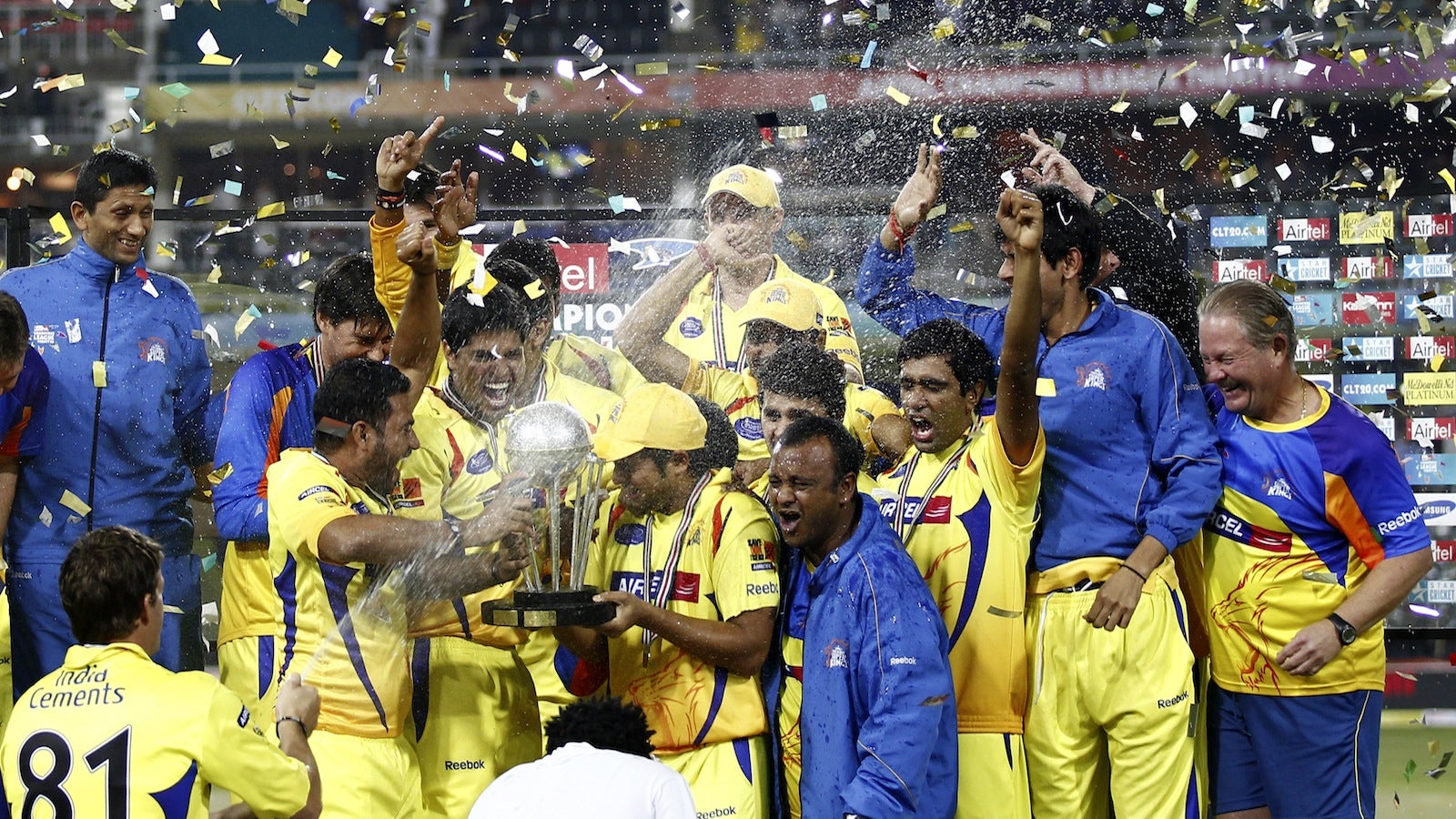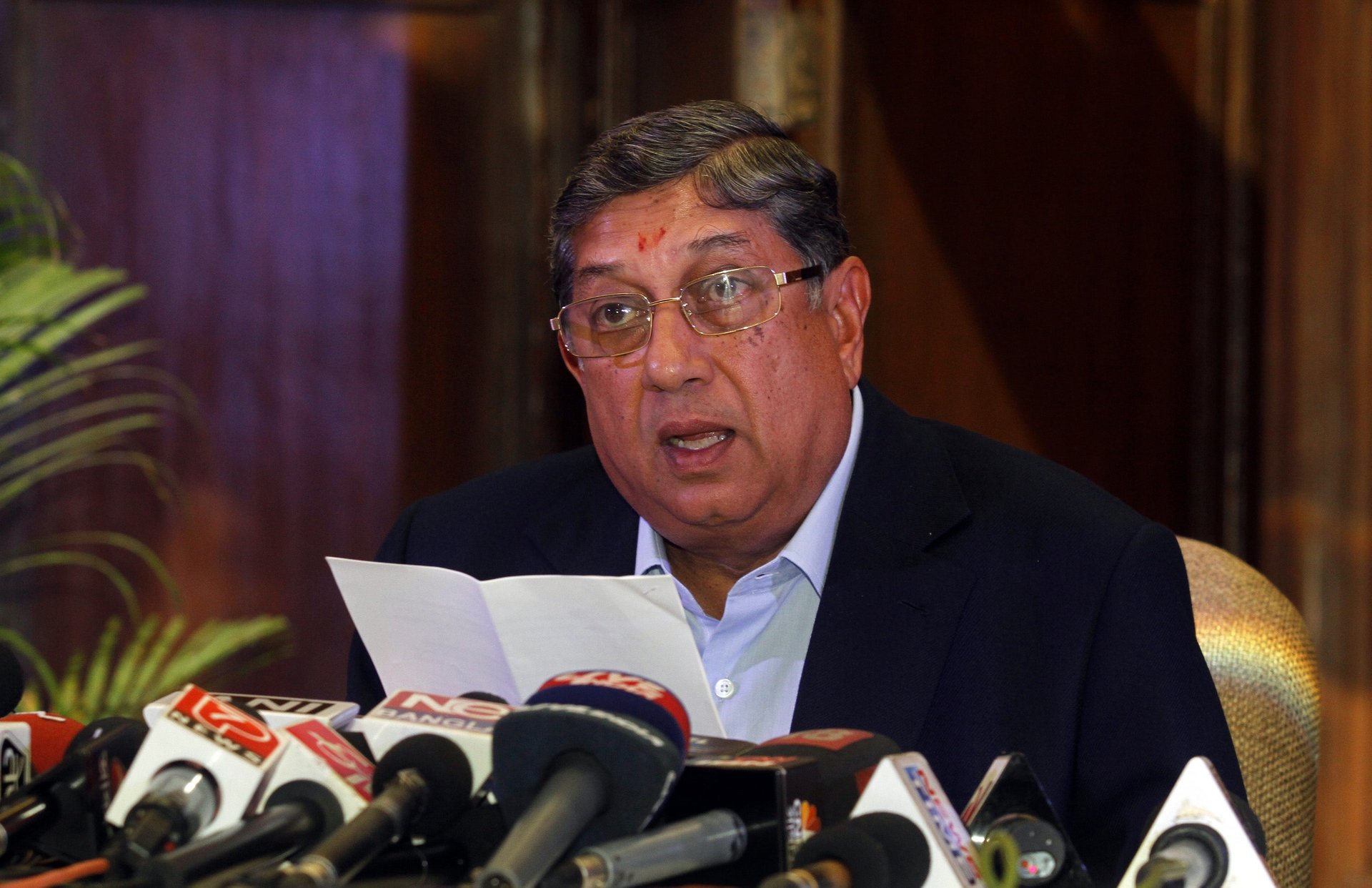The key to the survival of Indian cricket may actually be hidden in its latest scandal
Since the turn of the century, Indian cricket has been embroiled over and over again in corruption-related controversies that now threaten not just the credibility, but the very existence, of the sport in the country.


Since the turn of the century, Indian cricket has been embroiled over and over again in corruption-related controversies that now threaten not just the credibility, but the very existence, of the sport in the country.
In spite of the tremendous damage caused by the match-fixing scandal of circa 2000, the authorities have been unable to take the issue head on and get down to the bottom of it.
Scams and controversies have erupted ceaselessly ever since the Indian Premier League (IPL) was started in 2008. This was a tournament that became an instant success, had the world agape at the scale of its enterprise and profitability, but alas accompanied by an ugly underbelly almost from inception.
Piecemeal measures and ineffectual bandage treatment have led to a situation where the cricketing world now waits for the Supreme Court’s final order for the spot-fixing and corruption scam, which broke during the sixth season of the Indian Premier League in 2013.
Here is a brief history of Indian cricket’s latest scandal and some measures that the Board Of Control For Cricket In India (BCCI), the country’s main cricket administrator, must consider, to bring the game back from the brink.
The backstory
To recap, three players from the franchise Rajasthan Royal (there are eight franchises in all) were found in conversations with bookies for spot-fixing during some matches by the Delhi police who were tapping phones in another criminal matter.
The three —S Sreesanth, Ajit Chandila and Ankit Chavan—were arrested. Based on the charges framed by the police, and an internal inquiry by the BCCI, the players were then banned.
However, this was not an open-and-shut case. The Delhi police inquiries were supplemented by those of the Mumbai police, which included more transcripts between bookies and IPL associates. This time Raj Kundra, stakeholder in the Rajasthan Royals, and Gurunath Meiyappan, perceived as the team principal of the Chennai Super Kings, were both found to have been betting on matches.

The Chennai team was owned by India Cements, of which BCCI President N Srinivasan was the managing director. He was also aspiring then to become the chairman of the International Cricket Council (ICC). Most damagingly, Meiyappan was Srinivasan’s son-in-law.
Expectedly, the matter snowballed.
The inquiries
The IPL code of conduct clause 11.3 makes it expressly clear that any act by team owners, principals, officers of a franchise, which is adverse to the sport and the tournament, should be dealt with harshly through punitive fine, ban for a period or even termination.
An internal inquiry of the BCCI was again instituted, which cleared Srinivasan of any misdoing. A Public Interest Litigation plea (PIL) was lodged against Srinivasan by the Bihar Cricket Association, which incidentally had been suspended by the BCCI.
The matter traversed through the Mumbai High Court to the Supreme Court where the two disputing parties have been slugging it out for more than a year. In this period, the Supreme Court appointed a panel under retired Justice Mukul Mudgal to investigate and file a report on which it could act.
The interim report submitted by Justice Mudgal panel was found to be not robust enough. The panel, with Mudgal still at the helm, was beefed up and Srinivasan was asked to step aside as BCCI president till the case was settled. An extension was granted to the panel in September to complete its findings, which was submitted to the apex court last week.
The players
The Supreme Court final order is expected on Nov. 24. The Mudgal Committee report has already been made public. Meiyappan and Raj Kundra have been confirmed as having bet on matches, but for the most part the report does not indict senior functionaries of the IPL.
Interestingly, Srinivasan has been cleared of any corruption and even of trying to muzzle investigation. One “misdemeanour” mentioned was that he didn’t act against a code of conduct violation by a player (unnamed in the finding made public), but that apparently preceded his tenure as BCCI president and also did not pertain to the IPL.
The League’s chief operating officer (COO) Sundar Raman, it is mentioned, made some calls to a person who was in touch with alleged bookies. Whether this was done out of ignorance or knowledge is unclear. Explanations by Srinivasan and Sundar were to be lodged with the Supreme Court by Nov. 20.
Apparently, there are players mentioned too in the Mudgal report (though identified by numbers, not names) and they also have to wait the noose of judicial opinion.
While there has been quiet celebration in the BCCI after the Mudgal findings came into the public domain, what happens from here will depend on how Supreme Court justices Thakur and Kalifulla view the case. It is possible that they may take an adverse position, which could mean that the defendants will be hit for a six.
In that case, the worst affected would be Srinivasan who wants to stand for BCCI president again and he clearly has the support within the establishment for this. His name and fate—as indeed those of several others—hangs in the balance.
But whatever the Supreme Court final order, there are some steps which the establishment must pursue as an imperative to restore the faith of fans (and I dare say even financial supporters) in Indian cricket.
The reforms
The biggest complaint is about the shoddy governance in how the IPL has been run: with a lack of transparency, fragile checks and balances and, as some argue, a devil-may-care attitude. By extension, this is true of the BCCI. How can it not be, since the IPL administration is cut more or less from the same cloth.
A good starting point in putting better systems and processes in place would in recasting the Governing Council of the IPL, which now comprises entirely of BCCI administrators, one cricketer (Ravi Shastri) in an honorary capacity and a COO.
Whatever their credentials and effort, this motley lot has been proved ineffective in governance going by the number of controversies the league has faced. This has only succoured the perception that the IPL is being run by a cosy club.
More professionalism and openness would add managerial heft as well as help alter negative perception. A couple of accomplished people drawn from beyond the cricketing universe can be of help. This is hardly unusual in the corporate sector, where people from the outside are nominated to the board of directors.
In the 2014 season, Sunil Gavaskar who was put in charge by the Supreme Court to run the IPL, nominated technocrat Deepak Parekh (a cricket fanatic, too) as part of the Governing Council and the tournament went off without a hitch. Importantly, fans perceived this as closing the gap where transparency is concerned.
Add an ombudsman, and the IPL would have a fairly robust structure in place. The world’s best run sports leagues (NBA in the US for instance) have such an entity in place only because when an enterprise gets big and cash rich, multiple issues will invariably crop up. For the public at large, how these are addressed are crucial.
I would also argue for a representative of the franchises on the Governing Council. After all, they cough up good money and must have their interests protected. Currently, they are at the mercy of the whims and fancies of the hand-picked.
What can work for the IPL can also be replicated for the BCCI, where power is otherwise secured and lost by lobbying with state associations through promises of rewards, tangible or otherwise. This is good for sycophancy, but hardly makes for efficiency.
The BCCI incidentally has also been heavily infiltrated by political parties (Congress, BJP, NCP, Shiv Sena et al) which queers the pitch further where straightforward administration is concerned. While staving off the pressures from such diverse interests can’t be easy, professional management would help.
A CEO for the BCCI would help centralize operations in somebody who knows such a job, rather than somebody who essentially has to to keep state associations happy. The couple of “external” directors and an ombudsman, like one for the IPL, would give the management of the BCCI not only buffer against massive interference by vested interests from within, but also a richer flavour in administration.
Forming a Players Association (which would straddle both the BCCI and IPL) should be encouraged. While Indian cricketers are undoubtedly well looked after, as arguably the biggest stakeholders, they have no voice!
Indian cricket is reportedly worth between $2.5 billion and $3 billion. This success obviously redounds to the credit of people who have worked towards this over the past few decades, but now it needs more robust and professional management.
Perhaps the biggest elephant in the room is the issue of betting. As long as people and lawmakers in India pretend that betting is evil and should remain illegal, the monster will just remain below the surface and continue on its path of destruction.
Legalise betting and the monster is in the open, monitored and can be pegged. In other sports in other parts of the world, often it is betting shops and agencies that alert sports authorities to possible wrongdoings by studying betting patterns.
That, and a law in the criminal justice system which punishes illegal bettors harshly is the better antidote to curb the menace even if it cannot be eradicated entirely.
Shutting down the IPL or some such action is both melodramatic and misplaced; like throwing out the baby with the bathwater.